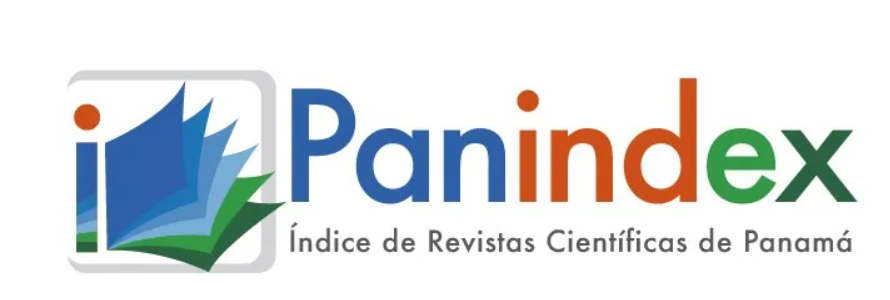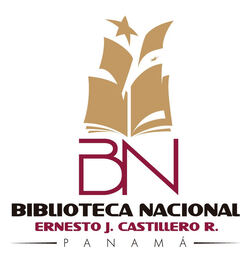The content of the publications and the links suggested in them are the sole responsibility of the authors and not of the Metropolitan University of Education, Science and Technology (UMECIT) or of the journal ORATORES. They are protected by international copyright laws as well as the logos of UMECIT AND ORATORES, hence their reproduction is totally prohibited.
This work is licensed under a Creative Commons Attribution-NonCommercial-NoDerivatives 4.0 International License.
The authors maintain the copyright and transfer the right of the first publication to the journal, with the article registered with Creative Commons Attribution-NonCommercial-NoDerivatives License, which allow others They can download the works published in this magazine and share them with other people, as long as their authorship is recognized, but they cannot be changed in any way nor can they be used commercially.
Authors are recommended to include their work in social networks such as Researchgate and institutional repositories once the article or visible fact has been published on the journal page, without forgetting to include the digital document identifier and the name of the journal.



Abstract
In participatory process began to prepare the Sombra Panamá Report, carried out by the Latin American Committee for the Defense of Women’s Rights (CLADEM) - Panama and the Family Studies and Training Center (CEFA), with support from a group of Panamanian researchers, to examine some issues that are considered relevant in the follow-up and monitoring of the measures established in the Convention on the Elimination of all forms of Discrimination against Women (CEDAW), and that should have been assumed by the Panamanian State, given the greater concern that it has about the levels of severity in issues of discrimination and violence against women, and that, in effect, had been the subject of recommendations by the Committee for the Elimination of Discrimination against Women, in its 2010 report. Recognizing that discrimination against women should only be understood by addressing its structural causes; among which stand out, socio-economic and gender inequalities. The report is based on a conceptual framework based on the principles of human dignity, international human rights and the human rights of women and girls; with a gender focus. Thus, the report begins with general references and under a participatory action methodology, the information was obtained. Next, the socio-economic and political context of the period studied (2012-2016) is exposed; and then the main findings that emerged from the consultation process carried out in six provinces of the country, through workshops, interviews and application of questionnaires to institutions, were described. Finally, the conclusions on each thematic area raised are presented, making a direct relationship with the recommendations of the CEDAW Committee to the Panamanian State in its 45th period of sessions (2010), the following results emerge from the consultations: The women consulted agreed that the specific obligation of the Ministry of Education in matters of sexual education is not being complied with, pointing out that the cause of this non-observance is the product of religious fundamentalisms and retarded groups that induce fear of have truthful and scientific information, in addition, the interviewees agreed that neither the INAMU, nor the CONVIMU and CONAMU fully comply with their obligations, both Law 4 on Equal Opportunities, and Law 82 on Violence against Women and in relation to the application of Law 82 of 2013, all the women surveyed responded that the provisions of said legislation were not being complied with.
References
APLAFA.(2015). Plan estratégico 2011-2015.Panamá.
CENTRO DE DERECHOS HUMANOS DE LAS MUJERES. CEDHM (2010) “El acceso a la justicia para las mujeres víctimas de violencias de género en el sistema penal acusatorio”.
CEPAL. (2014). Observatorio de igualdad de género de América Latina y el Caribe. 2011 al 2014.
CLADEM-CEFA. (2016). “Niñas madres, embarazo y maternidad forzada en América Latina y el Caribe”.
CLADEM-CEFA. (s.f.). “Informe alternativo de Panamá para LA CEDAW”.
CLADEM-CEFA. (2015). “Memoria del Primer Foro Nacional de la niña”. Panamá 2014-2015.
COLEGIO NACIONAL DE ABOGADOS. (2013). “Informe Alto Nivel 2013”. Panamá.
DEFENSORÍA DEL PUEBLO DE PANAMA. (2016). Boletines informativos 2012-2016.
OBSERVATORIO DE IGUALDAD DE GÉNERO DE AMÉRICA LATINA Y EL CARIBE. (2011). “El salto de la autonomía de los márgenes al Centro”.
OEA. COMISIÓN INTERAMERICANA DE DERECHOS HUMANOS. (2006). Acceso a la justicia para las mujeres víctimas de violencia en Las Américas.
FORO DE MUJERES DE PARTIDOS POLÍTICOS. (2011). “Evolución de la participación política de las mujeres de Panamá”.
INSTITUTO CONMEMORATIVO GORGAS DE ESTUDIOS DE LA SALUD. (2015) . 2012 2016. “Factores de riego asociados a la trasmisión del VIH y otras enfermedades de trasmisión sexual en adolescentes en el distrito de Panamá”.
“Encuesta Nacional Salud Sexual y Reproductiva Nacional Multisectorial, de IDA 2014-2019.
INSTITUTO INTERAMERICANO DE DERECHOS HUMANOS. (2008). “Femicidio:más allá de la violación del derecho a la vida”. San José Costa Rica.INSTITUTO NACIONAL DE ESTADISTICAS. (INEC). (2013). “Encuestas mercado laboral”. 2011-2013.
INSTITUTO NACIONAL DE ESTADISTICAS. (INEC). (2013).“Encuesta de hogares”. 2013.
INSTITUTO NACIONAL DE ESTADISTICAS. (INEC). (2010).Censo 2010.
INSTITUTO DE LA MUJER. (2013). Panamà. Informe Clara González .Panamá 2011-2013.
INAMU (s.f.). Respuesta al cuestionario enviado al INAMU para el informe alternativo 2012-2016.
MECSEVI. (2012). Mecanismo de seguimiento de la Convención Interamericana para prevenir, sancionar y erradicar la violencia contra la mujer”. “Tercer Informe hemisférico sobre la implementación de la Convención de Belém do Para”. Guía para la aplicación de la Convención Interamericana para prevenir, sancionar y erradicar la violencia contra la Mujer.2014.
MINISTERIO DE ECONOMÍA Y FINANZAS. (2013). Panamá. “Informe económico”2013”.
MINISTERIO PÚBLICO DE PANAMÁ. (2016). “Boletines del Centro de estadísticas y censo”.2012-2016.
MINSTERIO DE SALUD. (2010). “Informe del monitoreo y evaluación del paquete básico de indicadores”. Panamá 2010.
MINSTERIO DE SALUD. (2015). Análisis de la situación de la salud en Panamá. 2015.
MINSTERIO DE SALUD. (2015). Políticas y estrategias de salud.2010-2015
MINSTERIO DE SALUD. (2016). Boletines Estadísticos. Anuarios 2012-2016.
MUJERES CON DIGNIDAD Y DERECHO DE PANAMÁ. (s/f). “El trabajo sexual y la violencia institucional. Vulneración de derechos y abuso de poder”
MONTANARI, MARIA ROSA. (2012). En Androcentrismo en las Ciencias Sociales. Universidad de Panamá. 2012.
ONUMUJERES. (2016). “Modelo de Protocolo Latinoamericano de la investigación de la muerte violenta de mujeres por razón de género”.
ONUMUJERES. (2013). Compromisos de los Estados para erradicar la violencia contra mujer en América Latina.
ONUMUJERES. (2013). La eliminación y prevención de todas las formas de violencia contra las mujeres y niñas.
ONUSIDA (2016).. “Estimaciones sobre el VIH y el SIDA”.
PNUD. (2014). ”Informe de Desarrollo Humano: el futuro es ahora”.
PNUD. (2015). “Atlas del desarrollo humano local”.
RedTraSEX. (2017). “Identificar las deudas del Estado Panameño en materia del VIH y de derechos humanos de las mujeres, aportes al informe sombra sobre la aplicación en Panamá de la Convención para la Eliminación de todas las formas de discriminación contra las mujeres (CEDAW)”. Agosto del 2017.
TAUS, PATRICIA. (2014). ”La igualdad de género y el acceso a la justicia en las mujeres víctimas de violencia en la región dentro del sistema internacional de protección de los Derechos Humanos”. Revista IVS. Volumen 8 nos 34. Puebla, México.
Downloads
Publication Facts
Reviewer profiles N/A
Author statements
- Academic society
- Universidad Metropolitana de Educación, Ciencia y Tecnología
- Publisher
- Universidad Metropolitana de Educación, Ciencia y Tecnología



















